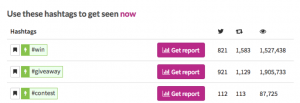In a world that is saturated with digital and social media marketing channels, the concept of reaching customers through email has become largely unfashionable.
This does not do justice to the potential that exists within the practice of email marketing, however, which remains one of the three main drivers of online traffic. It is also one of the most profitable marketing techniques, capable of delivering an estimated ROI of 3800% (or $ 38 for every single $ 1 spent).
The key lies in the execution of your campaign, of course, and the techniques that you use to engage readers. With this in mind, here are some simple steps towards unleashing the true potential of email marketing in the modern age:
Use Personalized Content to Resonate With Customers
Like all other marketing channels, email is only ever as effective as techniques used to leverage it. So even if you have a viable value proposition to present to customers, the publication of uninspiring and generic content is unlikely to engage customers.
The nature of your content is even more important when you consider that the average adult has an attention span of just eight seconds, which creates an exceptionally narrow window of opportunities for brands to engage their customers.
In the case of email marketing, personalisation is key to the creation of content that truly resonates with customers. This assertion can be backed by various statistics too, with personalized content though to increase click-through rates by 35% on average and conversion rates by as much as 25%.
In terms of execution, it is important to remember that personalisation extends beyond using the name of each individual customer. While this important (and capable of empowering each one as seminal drivers of the brand’s success), you should also use techniques such as analytical CRM to understand consumer behavior and personalize the content that offers relevant and tangible value to your customers.
This can include everything from personalized product recommendation to affiliate advertising, so long as it leverages actionable data and resonates with your recipients.
Make Your Calls-to-action Stand Out, in More Ways Than One
While the combination of a clearly-defined value proposition and personalized content will enhance your email content considerably, this means little if it does not actively convert leads. After all, conversion is central to the success of all marketing campaigns across every available channel, regardless of whether you are looking to sell products or simply build awareness.
This is where calls-to-action (CTAs) come into play, as when used correctly they can direct customers to take a desired action and continue their journey with your brand.
With this in mind, it is imperative that you optimize the impact of your CTAs, both in terms of their presentation and their content.
In terms of the former, you first make sure that your primary messaging and affiliated CTA is located above the fold, as this helps to maximize the visibility of the text across all devices. Not only this, but it should also be actionable so that customers can simply click-through a link or icon to continue their interaction with the brand.
When it comes to the primary messaging that underpins your CTA, you should focus on presenting this in a concise and easy to comprehend manner. Make no mistake; customers should be able to quickly decipher your message and identify the unique value proposition that represents your brand.
Ensure That Data Drives and Informs Your Campaign
We have already touched on how analytical CRM platforms can be used to influence email marketing, but this is also part of a wider trend in the commercial world. More specifically, we are seeing marketers move away from traditional demographics based on age and gender, and instead, leverage observed consumer behavior to drive individual campaigns.
In this respect, in-depth and detailed data sets are crucial to successfully marketing your products (and brand) through email. These include criteria such as customers’ spending behavior and the frequency with which they interact with the brand. This helps companies to attribute a cost base and profit center to their customer base, which in turn dictates how much should be spent on various marketing disciplines.
By unearthing data pertaining to subtle customer preferences in terms of how they spend their money, your business can also tailor the content of its emails to share relevant promotions either on or offline.
Similarly, you can use such data to publish emails at the optimum frequency, as this ensures that you are able to engage individual customers and segments without overwhelming them or causing them to become cynical of the brand.
Digital & Social Articles on Business 2 Community(42)







